Is It OK To Heel Strike When Running

We all have our own unique way of running; from the way we hold our hands and arms all the way down to how our feet make contact with the ground. Check out a video of yourself running in a crowd of competitors and you might be surprised at the little idiosyncrasies we each have. However, one thing that we are all told is that heel striking is bad! How much truth is there in this statement though?
Heel striking is when your heel is the first part of the foot that comes into contact with the floor when you are running. The runner typically then rolls through to push off the toes to generate the force for the next stride. Evidence shows that heel striking does lead to more injuries than landing on your forefoot, however this may be related to where the foot is placed in relation to the body rather than which part of the foot lands first.
What are Heel Striking And Forefoot Striking?
Heel striking refers to the style of running where the runner’s heel is the first part of the foot to make contact with the ground. The runner then rolls forward through onto the toes and pushes off for the next stride. This differs from forefoot striking in that forefoot runners run ‘on their toes’, with the heel rarely coming in contact with the ground.
You can notice a distinct difference between the two styles as heel strikers look like they are shuffling along, whereas forefoot runners have more of a smooth, bouncy style. To take it to the extreme, compare speed walkers to sprinters and you can see the glaring differences in style.
How Do Forces Differ Between Heel Striking And Forefoot Striking?
However you choose to run you will be creating a massive amount of force as you land; anywhere from 1.5 to 3 times your own body weight. The way that this force is manifested when heel striking is interesting because it creates what is known as an impact transient. This is a massive spike in force which then drops momentarily before continuing in a more natural curve.

This is something we can actually feel as runners, particularly as you get more tired and you get the sensation that your whole body is being pounded against the pavement, rather than gliding fluidly through each stride.
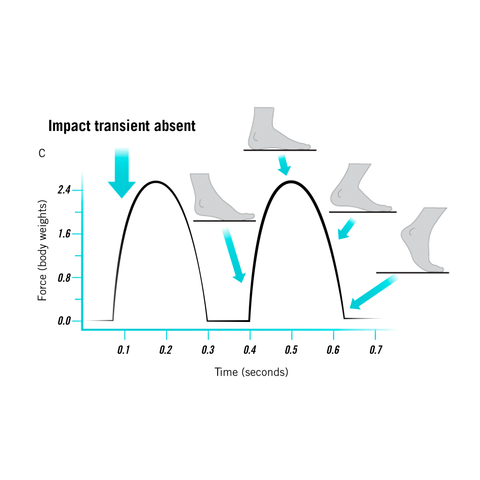
The force generated by forefoot striking creates a much smoother arc as there is no impact transient present. It is interesting to note that the maximum force generated is exactly the same, the only difference is the way in which the forces are delivered
Is Heel Striking Bad for Your Knees?
Both heel striking and forefoot striking create the same amount of force on the body, the difference is in how and where those forces are felt. Heel striking will load the knees, hips and lower back more than forefoot striking, which will place more load on the ankles, this has implications for those of us with previous injuries.
Runners who suffer from knee or lower back injuries might do well to move towards forefoot striking as a way to reduce force on the knees by transferring it to the ankle instead. On the other hand, if you suffer from weak ankles then it may be the case that heel striking is the better style for you.
What Is Over-striding And How Does It Relate To Heel Striking?

Ideally your foot should land directly under your body when running. Over-striding is when a runner’s foot lands far out in front. This can lead to injuries because the force of impacts such as higher brake and compression loading. This is especially heavy on the hips and knees. Heel-strikers are more likely to over-stride than forefoot strikers because forefoot striking forces you to take smaller steps and therefore reduces the possibility of overextending.
Why Do People Say Heel Striking Is Bad?
It was not until the 1970s that running shoes as we know them became popular. For thousands of years we humans had been doing just fine with barefoot running. When we run barefoot, we naturally tend towards forefoot striking because it is simply painful to land on our heels. It is this idea that adds fuel to the fire that barefoot running is more natural and so, therefore, is forefoot striking and so it follows that heel striking is bad.
Final Thoughts
To say that heel striking is bad is a little too simplistic. For a runner with past ankle issues, with a perfect stride length that doesn’t over-reach, heel striking may be the perfect way to run. On the other hand, if you have suffered from weak knees and you know you over-stride then a move towards forefoot striking may be what you need.
Our bodies are all different so it is dangerous to have a ‘one-fits-all’ solution to these questions. The best thing we can do is educate ourselves about the options we have and then try them out to see what works best for us. And most importantly; have fun!
Written for Innerforce by Stewart Spiessens
Photo credits: Derek Stone (ig. @working.triathlete)

We all have our own unique way of running; from the way we hold our hands and arms all the way down to how our feet make contact with the ground. Check out a video of yourself running in a crowd of competitors and you might be surprised at the little idiosyncrasies we each have. However, one thing that we are all told is that heel striking is bad! How much truth is there in this statement though?
Heel striking is when your heel is the first part of the foot that comes into contact with the floor when you are running. The runner typically then rolls through to push off the toes to generate the force for the next stride. Evidence shows that heel striking does lead to more injuries than landing on your forefoot, however this may be related to where the foot is placed in relation to the body rather than which part of the foot lands first.
What are Heel Striking And Forefoot Striking?
Heel striking refers to the style of running where the runner’s heel is the first part of the foot to make contact with the ground. The runner then rolls forward through onto the toes and pushes off for the next stride. This differs from forefoot striking in that forefoot runners run ‘on their toes’, with the heel rarely coming in contact with the ground.
You can notice a distinct difference between the two styles as heel strikers look like they are shuffling along, whereas forefoot runners have more of a smooth, bouncy style. To take it to the extreme, compare speed walkers to sprinters and you can see the glaring differences in style.
How Do Forces Differ Between Heel Striking And Forefoot Striking?
However you choose to run you will be creating a massive amount of force as you land; anywhere from 1.5 to 3 times your own body weight. The way that this force is manifested when heel striking is interesting because it creates what is known as an impact transient. This is a massive spike in force which then drops momentarily before continuing in a more natural curve.

This is something we can actually feel as runners, particularly as you get more tired and you get the sensation that your whole body is being pounded against the pavement, rather than gliding fluidly through each stride.

The force generated by forefoot striking creates a much smoother arc as there is no impact transient present. It is interesting to note that the maximum force generated is exactly the same, the only difference is the way in which the forces are delivered
Is Heel Striking Bad for Your Knees?
Both heel striking and forefoot striking create the same amount of force on the body, the difference is in how and where those forces are felt. Heel striking will load the knees, hips and lower back more than forefoot striking, which will place more load on the ankles, this has implications for those of us with previous injuries.
Runners who suffer from knee or lower back injuries might do well to move towards forefoot striking as a way to reduce force on the knees by transferring it to the ankle instead. On the other hand, if you suffer from weak ankles then it may be the case that heel striking is the better style for you.
What Is Over-striding And How Does It Relate To Heel Striking?

Ideally your foot should land directly under your body when running. Over-striding is when a runner’s foot lands far out in front. This can lead to injuries because the force of impacts such as higher brake and compression loading. This is especially heavy on the hips and knees. Heel-strikers are more likely to over-stride than forefoot strikers because forefoot striking forces you to take smaller steps and therefore reduces the possibility of overextending.
Why Do People Say Heel Striking Is Bad?
It was not until the 1970s that running shoes as we know them became popular. For thousands of years we humans had been doing just fine with barefoot running. When we run barefoot, we naturally tend towards forefoot striking because it is simply painful to land on our heels. It is this idea that adds fuel to the fire that barefoot running is more natural and so, therefore, is forefoot striking and so it follows that heel striking is bad.
Final Thoughts
To say that heel striking is bad is a little too simplistic. For a runner with past ankle issues, with a perfect stride length that doesn’t over-reach, heel striking may be the perfect way to run. On the other hand, if you have suffered from weak knees and you know you over-stride then a move towards forefoot striking may be what you need.
Our bodies are all different so it is dangerous to have a ‘one-fits-all’ solution to these questions. The best thing we can do is educate ourselves about the options we have and then try them out to see what works best for us. And most importantly; have fun!
Written for Innerforce by Stewart Spiessens
Photo credits: Derek Stone (ig. @working.triathlete)
SEE WHAT CUSTOM APPAREL LOOKS LIKE

GEAR UP
MORE FROM THE BLOG
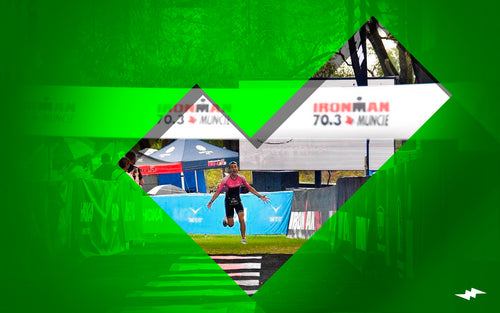
5 Qualities Of A Successful Triathlete
What is it that makes the Brownlee brothers such successful triathletes? How did Chrissie Wellington dominate the sport of Ironman...
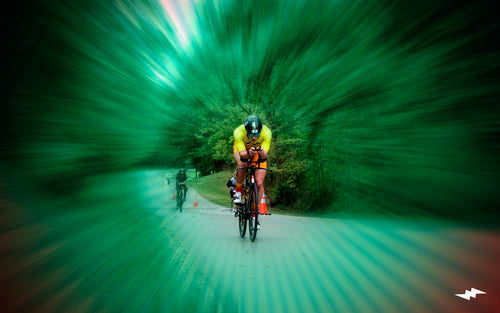
5 Exercises To Improve Bike Strength
There are a million reasons why being strong on the bike will improve you as a triathlete. Whether it is...
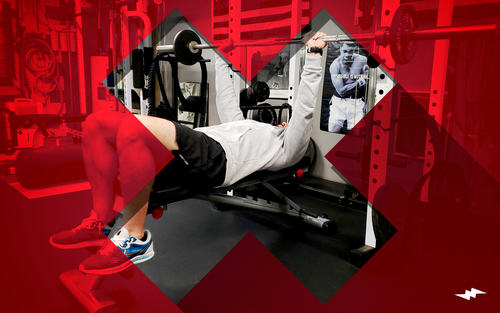
5 Common Strength Training Mistakes That Triathletes Make
Strength training is oftentimes pushed to the back of our training programmes as triathletes. At best it is an add-on...
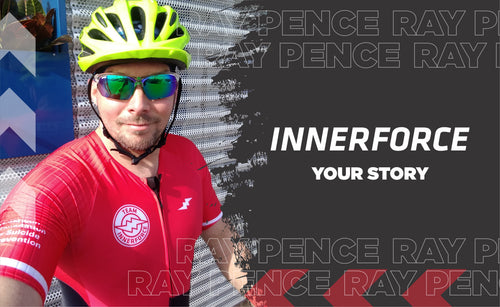
COMBINING TRIATHLON WITH MULTIPLE JOBS by Ray Pence
@raypencetri (Instagram) Ray Pence (37) has been part of Team Innerforce for quite some time now. We sat down...



